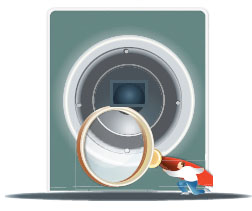- Considering small details and then shifting perspective to look at the big picture helps us do our jobs every day. In computing, zooming is important because our work almost always goes beyond the edge of the screen. In my last column I zoomed in on portable devices and how they might take on characteristics of built environments in the future. But before we look again into the future, let’s see what we can learn from two influential works from the past.
- In 1975 Benoît Mandelbrot, while working at IBM, coined the term “fractal” in his book, Fractals: Form, Chance and Dimension. In this book he described the mathematics of self-similarity, the way that natural
structures often appear similar at all levels of magnification.
Just a few years later IBM commissioned designers Charles and Ray Eames to create the film Powers of Ten. Their fusion of art and science illustrated the logarithmic scale of life. In the film the Eames’ zoom in and out of a simple picnic scene increasing and then decreasing the view by a power of 10, every 10 seconds. The view ranges from 1026 meters, the size of the observable universe, to 10-18 meter within the nucleus of a carbon molecule. As you watch the 9-minute film (available on YouTube), one of things you notice is the similarity of the very small and the very large.
As an AV designer, you are often forced to change your scale of reference. You design editing stations and stadia. You focus on portable display panels and on massive outdoor signs. How are these large and small elements related? Is there fractal-like self-similarity among portable devices, laptops, presentation rooms, and buildings? I don’t have enough space in this column to explore this question in depth, but let’s take a look at what this approach might teach us about one common tool: touchscreens.
One common goal for both AV environments and portable devices is controlling a display. Whether we’re selecting between a PowerPoint or DVD, or zooming in on a photo or a map, we’re controlling an image. The iPhone has made the touchscreen commonplace, but is it a tool that works well for both large AV environments and small devices? The advantage of a touchscreen on a portable device is that it is typically used to directly manipulate an image. When you choose music on the iTouch, you flip the album artwork that is your focus. When you pan or zoom around a map or photo, you are pushing or stretching the image directly. This approach is ideal, extremely familiar, and almost intuitive (a difficult standard to achieve).

the subject of interest.Typical touchscreen interfaces, on the other hand, do not work as gestural amplifiers. They are displays unto themselves that compete with the true focus of most spaces. It is like using two iPhones, one to control another. In most AV implementations touchscreens force the user to take their eyes off of the primary point of interest.
AV designers and manufacturers should always endeavor to enable users to maintain focus on the content in a presentation space. Stay flexible and change your perspective often. Zooming in and out of our normal environment can teach us better ways of designing and understanding our world. Our ability to evolve AV design into the next generation may lie in our ability to learn lessons from the portable technology in our pockets.
Paul Chavez (pchavez@harman.com) is the director of systems applications for Harman Pro Group. He is a usability evangelist and a futurologist. Chavez has designed a variety of audiovisual systems ranging from themed attractions to super yachts. He has also taught and written on the topics of interaction design, audiovisual design, and networking.
